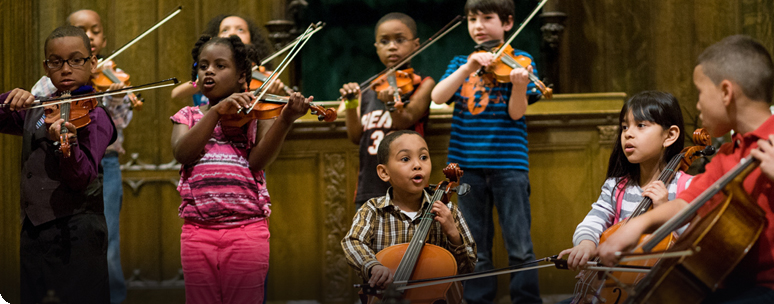We started to work on a new project.
First, we sat in a circle and made a recording of our voices.
[audio:http://www.communitymusicworks.org/medialab/wp-content/uploads/2012/02/ClassNoises.mp3|titles=ClassNoises]Then we each took this recording to make new pieces, using LogicPro.
Here are the 6 directions for the piece that we made:
1. The length of the piece will be no shorter than 1 minute & no longer than 3 minutes
2. No use of pre-made (by someone else) sounds
3. Use at least 3 different sounds, including 1 new live recording
4. Make this piece “rhythm/beat oriented”
5. Include at least 1 peak point in the piece
6. Don’t loop everything, but repeat something
And here are the pieces!!!
Aiden – [audio:http://www.communitymusicworks.org/medialab/wp-content/uploads/2012/02/swagaiden.mp3|titles=swagaiden]
Brandon – [audio:http://www.communitymusicworks.org/medialab/wp-content/uploads/2012/02/Brandon1.mp3|titles=Brandon1]
Emily – [audio:http://www.communitymusicworks.org/medialab/wp-content/uploads/2012/02/EmilyC.mp3|titles=EmilyC]
Liam – [audio:http://www.communitymusicworks.org/medialab/wp-content/uploads/2012/02/Liam-pizzicatto-21312.mp3|titles=Liam pizzicatto 21312]
[audio:http://www.communitymusicworks.org/medialab/wp-content/uploads/2012/02/Liam-mvmt.-2-21312-1.mp3|titles=Liam mvmt. 2 21312 1]Malachy – [audio:http://www.communitymusicworks.org/medialab/wp-content/uploads/2012/02/ChickenNuggetsBySnakeSquadMalachyH.mp3|titles=ChickenNuggetsBySnakeSquadMalachyH]








 Rolling dice to pick notes
Rolling dice to pick notes







